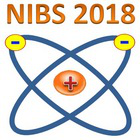Speaker
Mr
Shota YAMADA
(Keio University)
Description
$\,\,\,\,\,\,\,\,$Multi cusp DC arc-discharge hydrogen negative ion ($\mathrm {H}^-$) source has been developed for proton cyclotron, which is used for Boron Neutron Capture Therapy (BNCT) [1, 2]. In order to shorten the treatment time for BNCT, it is required to get high extracted beam current from the source.
$\,\,\,\,\,\,\,\,$The final goal of this study is to understand the dependence of the $\mathrm {H}^-$ production on the operation parameters and optimize the $\mathrm {H}^-$ production in the source.
$\,\,\,\,\,\,\,\,$In this study, we focus on the $\mathrm {H}^-$ surface production which is a dominant process of $\mathrm {H}^-$ production. We’ve developed a 3D particle simulation model which simulates the $\mathrm {H}^-$ surface production process in the source. The simulation process consists of (i) electron transport analysis and (ii) neutral transport analysis. In the former, the electron energy distribution function: EEDF in the source has been calculated by KEIO-MARC code [3, 4, 5]. In the latter, following calculation has been conducted, 1) the transport processes of neutrals ($\mathrm {H}_2$, H) are simulated considering the important collision processes by using Monte Carlo Method, 2) the H atom flux onto the Plasma Grid (PG) is calculated, and 3) the $\mathrm {H}^-$ production on the PG surface is calculated by using Rasser’s formula [6].
$\,\,\,\,\,\,\,\,$Based on the above model, we are now performing a series of numerical simulations. In this paper, we report the dependence of $\mathrm {H}^-$ surface production on the following parameters, (a) the position of the filament and (b) the configuration of filter magnetic field. These simulation results will be useful for the optimization of the $\mathrm {H}^-$ production in the source.
$\,\,\,$
References
[1] Etoh H, Aoki Y, Mitsubori H et al. 2014 Rev. Sci. Instrum. $\bf{87}$ 02B107.
[2] Etoh H, Onai M, Aoki Y, et al. 2016 Rev. Sci. Instrum. $\bf{87}$ 02B135.
[3] Fujino I, Hatayama A, Takado N and Inoue T, 2008 Rev. Sci. Instrum. $\bf{79}$ 02A510
[4] Terasaki R, Fujino I, Hatayama A, Mizuno T and Inoue T, 2010, Rev. Sci. Instrum. $\bf{81}$ 02A703.
[5] Shibata T, Kashiwagi M, Inoue T, Hatayama A, and JAEA NBI Group 2013 J. Appl. Phys, $\bf{114}$ $\,\,\,\,\,\,\,\,$143301.
[6] B. Rasser et al, Surf. Sci. $\bf{118}$, 697(1982).
Primary author
Mr
Shota YAMADA
(Keio University)
Co-authors
Prof.
Akiyoshi Hatayama
(Keio University)
Mr
Hisashi Kitami
(Sumitomo Heavy Industries, Ltd.)
Prof.
Kazuo Hoshino
(Keio University)
Ms
Mako Yaguchi
(Keio University)
Dr
Nobuaki Takahashi
(Sumitomo Heavy Industries, Ltd.)
Dr
Yasushi Aoki
(Sumitomo Heavy Industries, Ltd.)

